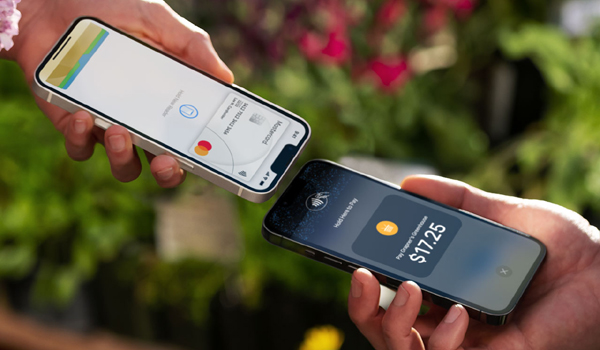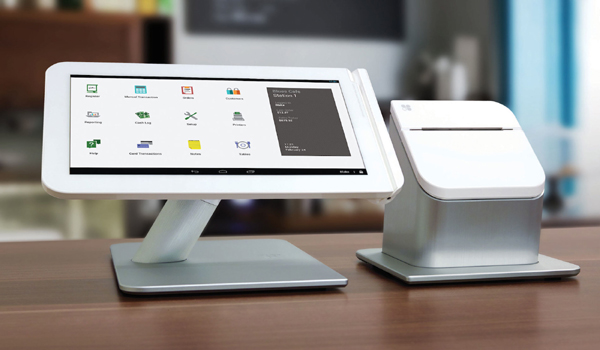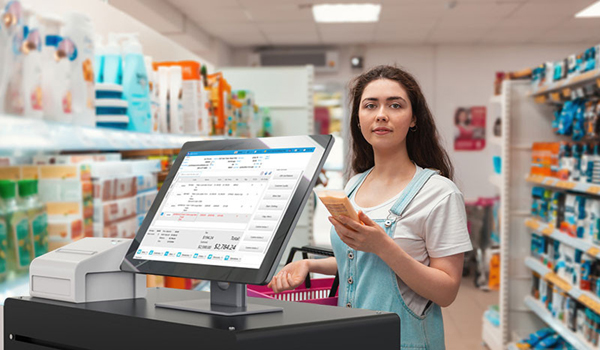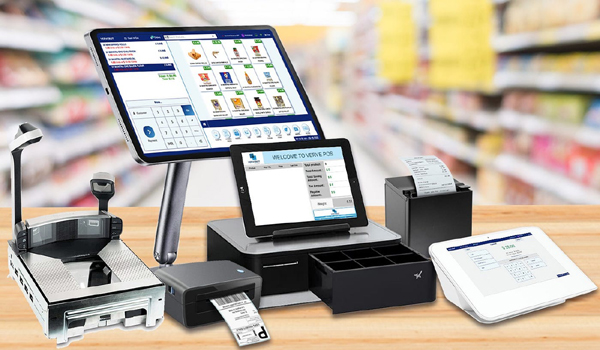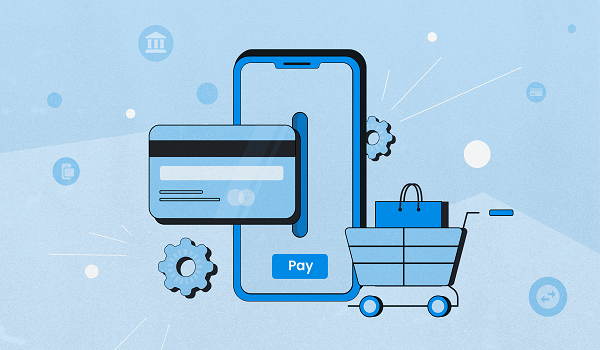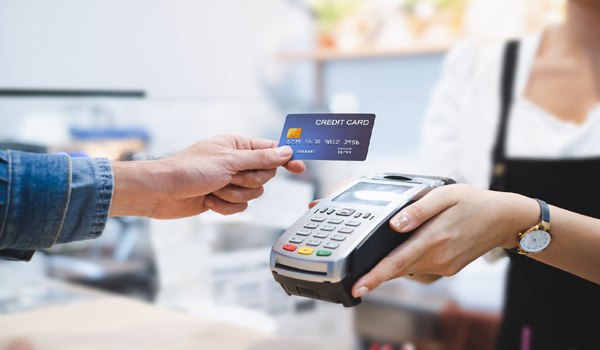
Contactless payment system
Contactless payment is a method of making secure transactions without the need to physically swipe or insert a card into a payment terminal. It allows consumers to simply tap or wave their contactless-enabled card, smartphone, or wearable device near a compatible payment terminal to complete the transaction. The technology uses radio frequency identification (RFID) or near-field communication (NFC) to exchange payment information between the device and the terminal. Contactless payments are convenient, fast, and generally used for small-value purchases like groceries, public transportation, or cafes.
How does contactless payment work?
Contactless payment works by utilizing near-field communication (NFC) technology to transmit information wirelessly between a contactless-enabled card, smartphone, or wearable device and a compatible payment terminal. When making a purchase, the user simply needs to hold or tap their contactless device near the terminal. The terminal then reads the transaction data from the device, verifies it with the payment network, and completes the transaction. This process is quick, convenient, and does not require physical contact or swiping of cards.
Benefits of contactless payment systems
- Convenience: Users can make payments quickly and easily by simply tapping or waving their contactless-enabled device, without the need to carry physical cards or cash.
- Speed: Contactless payments are faster than traditional methods, minimizing wait times at checkout counters, especially for small-value transactions.
- Enhanced hygiene: Contactless payments reduce the need for physical contact with payment terminals, promoting hygiene and reducing the risk of transmitting germs or pathogens.
- Security: Contactless payments are considered safe, as they use encryption and tokenization to protect sensitive card information. The technology also often requires authentication measures such as biometrics or PIN entry.
- Wide acceptance: Contactless payments are increasingly accepted by merchants worldwide, including retail stores, restaurants, public transportation networks, and more.
- Device flexibility: Contactless payments can be made using multiple devices, including contactless cards, smartphones, wearables, or even smartwatches, providing users with flexibility and choice.
- Real-time transaction tracking: Digital contactless payment platforms often offer the ability to view transaction history and monitor spending in real-time, allowing users to track their expenses more efficiently.
Security and privacy in contactless payments
- Security: Contactless payment systems incorporate several security measures to protect user information and prevent unauthorized access. These include encryption, tokenization (where a unique token is used in place of the actual card information), and transaction authentication methods like biometrics or PIN entry. These measures ensure that payment data is securely transmitted and stored, minimizing the risk of fraud or identity theft.
- Privacy: Contactless payment systems are designed to respect user privacy. Personal information is typically not stored on the device itself but is securely maintained by the payment network or financial institution. Additionally, transaction data is often anonymized, meaning that specific user details are not associated with individual transactions. This helps to safeguard user privacy while still allowing for convenient and secure payment transactions.
Contactless payment methods: cards, smartphones, and wearable
- Contactless Cards: These are traditional payment cards (such as credit or debit cards) that are equipped with a small chip and antenna. Users can make payments by tapping or waving their contactless card near a compatible payment terminal. These cards typically have the contactless payment symbol on them.
- Smartphones: Many smartphones today support contactless payments through mobile wallet apps. Users can add their credit or debit card information to their mobile wallet and make payments by holding their smartphone near a payment terminal.
- Wearables: Some wearable devices, such as smartwatches or fitness bands, also support contactless payments. Similar to smartphones, users can add their payment card information to their wearable device and make payments by tapping or holding the device near a payment terminal.
Adoption of contactless payment systems worldwide
The adoption of contactless payment systems has been steadily increasing worldwide. Many countries have embraced this convenient and secure payment method. Major factors contributing to the adoption include the growth of contactless-enabled payment terminals, advancements in technology, and changing consumer preferences.
Developed countries, such as the United States, Canada, Australia, and countries in Europe, have witnessed widespread implementation of contactless payment systems. Merchants in these regions have rapidly adopted contactless-enabled terminals, making it easier for consumers to make contactless payments.
In emerging economies, the adoption of contactless payment systems varies. Some countries, such as China, India, and Brazil, have seen significant growth in contactless payments due to factors like government initiatives, the rise of e-commerce, and the widespread use of smartphones.
Overall, the adoption of contactless payment systems is expected to continue expanding globally, driven by factors such as convenience, speed, enhanced security, and the increasing availability of contactless payment options in various markets.
Differences between NFC and RFID in contactless payments
NFC (Near Field Communication) and RFID (Radio Frequency Identification) are both wireless communication technologies commonly employed in contactless payment systems. However, they exhibit fundamental distinctions.
NFC is a specialized segment of RFID technology, characterized by its unique capability to facilitate bidirectional communication between devices
Contactless payment limits and transaction fees
Contactless payment limits refer to the maximum amount that can be transacted using a contactless payment method without requiring additional authentication, such as a PIN or signature. These limits vary by country, payment card issuer, and merchant policies.
In many countries, contactless payment limits are set to encourage quick and convenient transactions for small-value purchases. Transaction fees in contactless payments may vary depending on various factors, including the payment service provider, the type of transaction (e.g., in-store or online), the type of card being used, and the agreement between the merchant and the payment processor. Merchants may be charged a small fee per transaction, a percentage of the transaction amount, or a combination of both.
Contactless payment trends and future developments
- Increasing Adoption: Contactless payments have witnessed significant growth in recent years, with more consumers and merchants embracing the convenience and speed of contactless transactions.
- Mobile Wallets: The rise of mobile wallets, such as Apple Pay, Google Pay, and Samsung Pay, has accelerated the adoption of contactless payments. These platforms allow users to store their payment information securely on their smartphones and make payments by simply tapping their device at a contactless-enabled terminal.
- Wearable Devices: Contactless payments are now expanding beyond smartphones to include wearable devices like smart watches and fitness trackers. These devices can be linked to payment accounts, enabling users to make payments with a simple gesture of their wrist.
- Biometric Authentication: As contactless payments become more prevalent, biometric authentication methods like fingerprint recognition or facial recognition are being integrated to enhance security and simplify transactions.
- Internet of Things (IoT) Integration: The integration of contactless payment technology into IoT devices, such as connected cars or smart home devices opens up new possibilities for seamless and convenient transactions in various settings.
- Increased Merchant Acceptance: Contactless-enabled payment terminals are becoming more widespread, with merchants across various industries adopting the technology to cater to the growing demand for contactless payments.
- Enhanced Security Measures: Contactless payment systems are continuously improving security measures to protect against fraud. This includes the implementation of tokenization, encryption, and additional authentication methods to safeguard users' payment information.
- Cross-Border Compatibility: Efforts are being made to ensure cross-border compatibility of contactless payment systems, enabling users to make payments seamlessly when traveling internationally.
- Integration with Loyalty Programs: Contactless payment systems are being integrated with loyalty programs, enabling users to earn rewards and redeem them at the point of sale.
- Value-Added Services: Contactless payment systems are expanding beyond traditional transactions to include additional services like transit ticketing, access control, and other personalized experiences.
Conclusion
The contactless payment system has revolutionized the way we make transactions, offering convenience, speed, and enhanced security. With contactless-enabled cards, smartphones, and wearable devices, consumers can easily tap or wave their device near a compatible payment terminal to complete a purchase. The adoption of contactless payment systems has been steadily increasing worldwide, with merchants and financial institutions embracing the technology. The future of contactless payments looks promising, with advancements such as mobile wallets, wearable devices, biometric authentication, and greater merchant acceptance. These developments, coupled with continuous improvements in security measures and integration with other services, will further enhance the user experience and drive the growth of contactless payments. Overall, the contactless payment system has transformed the way we make payments, offering a seamless, efficient, and secure method for transactions.
